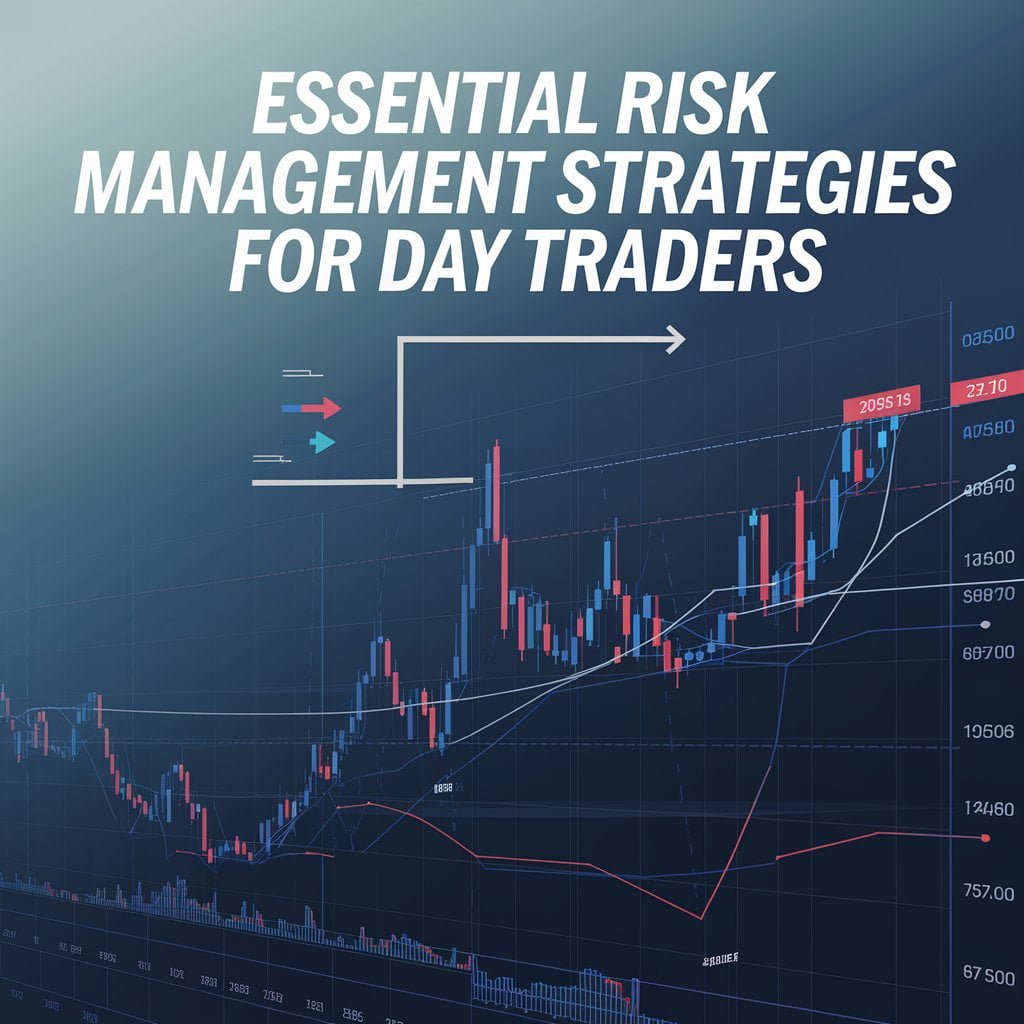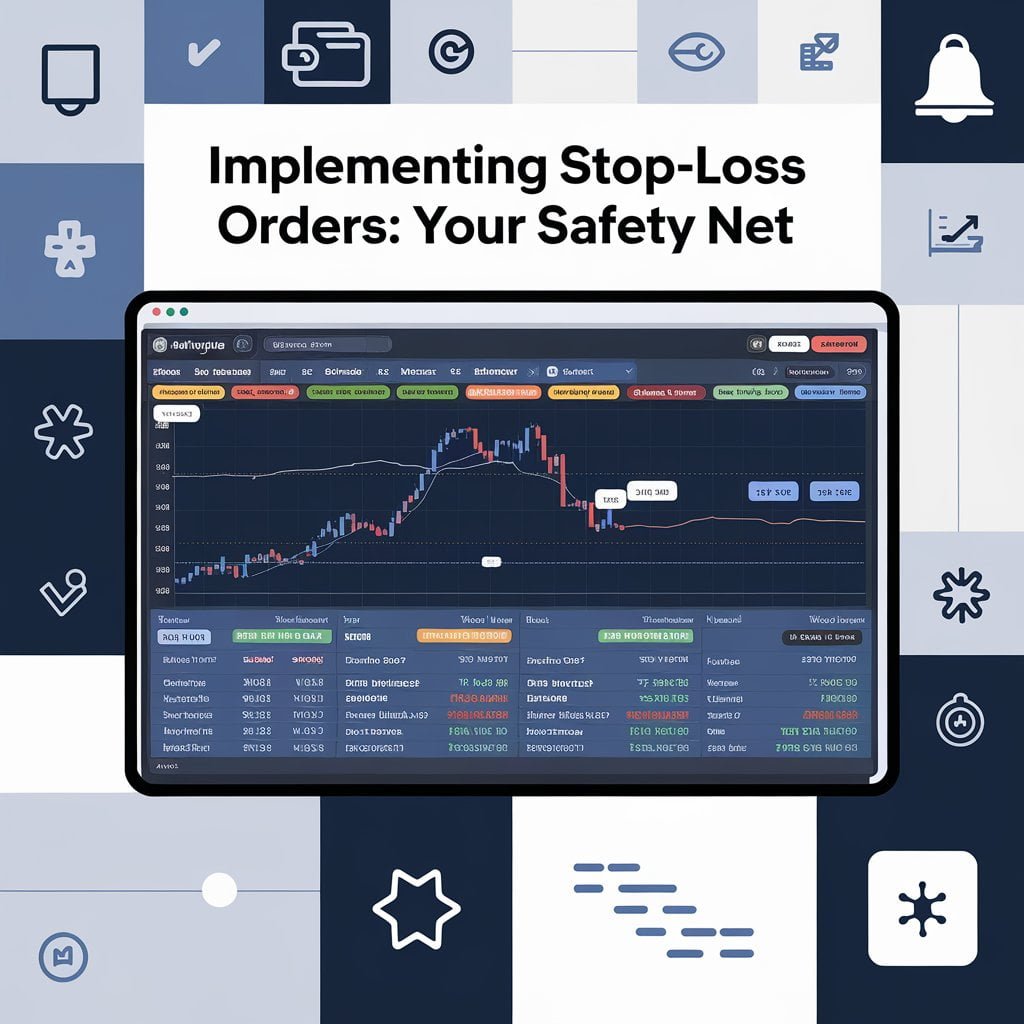
Essential Risk Management Strategies for Day Traders
Click Here To Save Time
Time Saver
– Effective risk management is essential for day traders to protect their capital and ensure long-term success.
– Position sizing and the use of stop-loss orders are critical strategies to minimize potential losses.
– Understanding market volatility and maintaining emotional control can help traders make better decisions.
– Diversification across various assets reduces risk by limiting exposure to any single market.
– Using technical analysis and risk-reward ratios allows traders to make data-driven decisions.
– Continuous learning and adaptation are necessary for navigating the ever-changing financial markets.
Introduction
Imagine stepping into the fast-paced world of day trading, your screen filled with flashing numbers, your heart racing with every market tick. The excitement is undeniable, and the potential for profits can be very tempting.
However, there’s a reality that all traders must face: for every winning trade, there are countless others who have lost their money due to poor risk management. This article is designed to ensure you don’t become one of those unfortunate traders.
We will explore essential risk management strategies to protect your capital in day trading. You’ll learn about position sizing, stop-loss orders, market volatility, and how to maintain emotional control.
Through real-life examples, we’ll illustrate how these strategies work in practice, helping you to not just trade with confidence, but with a solid plan to safeguard your financial future.
Grasping the Risk in Day Trading

Day trading involves making quick decisions to buy and sell financial instruments within the same day, aiming to profit from small price movements.
However, this fast-paced trading style carries significant risks. Markets are unpredictable; news events, earnings reports, or unexpected geopolitical events can cause rapid price swings.
Case Study:
Sarah, a novice trader, began day trading with $10,000 in tech stocks. One morning, a major tech company’s poor earnings report led to a sharp drop in its stock price. Sarah hadn’t set a stop-loss order and quickly lost 15% of her capital.
This example shows the importance of having a solid risk management strategy to avoid significant losses.
Mastering Position Sizing

Position sizing involves determining how much capital to allocate to a single trade. It’s a fundamental risk management strategy for day traders. New traders often make the mistake of investing too much in one position, thinking it will lead to higher returns. However, this can also lead to substantial losses.
Example:
David, another day trader, invested half of his $5,000 capital in one stock. When the stock dropped by 10%, David lost $250. If he had only invested 10% of his capital, his loss would have been just $50.
A common rule is the 1% rule: never risk more than 1% of your trading capital on a single trade. This strategy helps you withstand a series of losses without wiping out your entire account.
Implementing Stop-Loss Orders: Your Safety Net

A stop-loss order is an automatic instruction to sell a security when it reaches a certain price, limiting potential losses. It’s like a safety net, protecting your capital from substantial declines.
Case Study:
In 2020, Michael, a day trader, failed to set a stop-loss order after investing in a volatile stock. Despite initial gains, the stock plummeted overnight due to bad news, and Michael lost 60% of his investment.
Setting a stop-loss would have minimized his losses, preserving his capital for future trades.
Recognizing Market Volatility
Market volatility refers to how frequently and significantly prices change. While volatility can create opportunities for profit, it also increases the risk of losses.
Understanding and anticipating volatility is crucial for managing risks.
Example:
Jane, an experienced day trader, knows that markets become more volatile around economic news releases.
She adjusts her strategy by reducing her position sizes and tightening her stop-losses during these periods, protecting her capital while still seizing profitable opportunities.
Maintaining Emotional Control
Day trading is as much about managing emotions as it is about financial acumen. Fear and greed can cloud judgment, leading to poor decisions. Many traders hold onto losing positions too long due to fear or enter trades too hastily out of greed.
Case Study:
Tom, a day trader, grew overconfident after a series of wins and increased his position sizes. The market turned against him, and his emotional response led to heavy losses.
A solid trading plan and emotional discipline could have helped him avoid this downturn. Mindfulness practices, like meditation, can also help maintain calm and focus during market fluctuations.
Diversification: Don’t Put All Your Eggs in One Basket

Diversification means spreading investments across different assets to minimize risk. In day trading, this could mean trading various stocks, currencies, or commodities instead of focusing on a single market.
Example:
Lisa, a savvy trader, spreads her capital across multiple assets, including stocks, ETFs, and forex. This approach reduces the risk of a substantial loss if one market performs poorly, providing more stability to her overall portfolio.
Leveraging Technical Analysis for Risk Management

Technical analysis uses historical data like price and volume to predict future movements, helping traders manage risk more effectively.
Example:
John uses technical tools, such as moving averages and support lines, to set stop-loss and take-profit levels. By relying on data-driven analysis rather than intuition, John minimizes risks and increases his chances of successful trades.
Evaluating Trades with Risk-Reward Ratios
The risk-reward ratio compares potential profit to potential loss. A common rule is to aim for a ratio of at least 1:2 — meaning the potential profit should be at least twice the potential loss.
Example:
Emma only takes trades with a favorable risk-reward ratio. Even if she loses on some trades, her gains outweigh her losses over time, leading to long-term success.
Adapting and Learning: The Trader’s Edge
Markets change rapidly, and successful traders know the importance of continuous learning. Analyzing past trades, studying trends, and learning from others are all critical to staying ahead.
Alex, a diligent trader, kept a journal of all his trades. Over time, he identified patterns in his mistakes, like trading during high volatility without proper risk management.
By learning from these errors, he refined his strategies and became more disciplined, protecting his capital more effectively.
Conclusion
Risk management isn’t just a part of day trading; it’s the bedrock of success. From understanding volatility and emotional control to using stop-loss orders and technical analysis, these strategies help protect your capital.
Real-life examples and case studies illustrate how proper risk management can save you from significant losses. Whether you’re a novice or an experienced trader, adopting these principles will help you trade with greater confidence and security.
Remember, day trading isn’t only about making money—it’s also about safeguarding what you have. Trade wisely, stay informed, and always manage your risks.
Click Here For Our Sources
Sources
www.investopedia.com/risk-management
www.babypips.com/learn/forex/risk-management-in-forex-trading
www.thebalance.com/day-trading-risk-management-1031173
www.tradingsim.com/blog/risk-management-day-trading
www.stocktrader.com/articles/risk-management-for-day-traders
Leave a Reply
You must be logged in to post a comment.